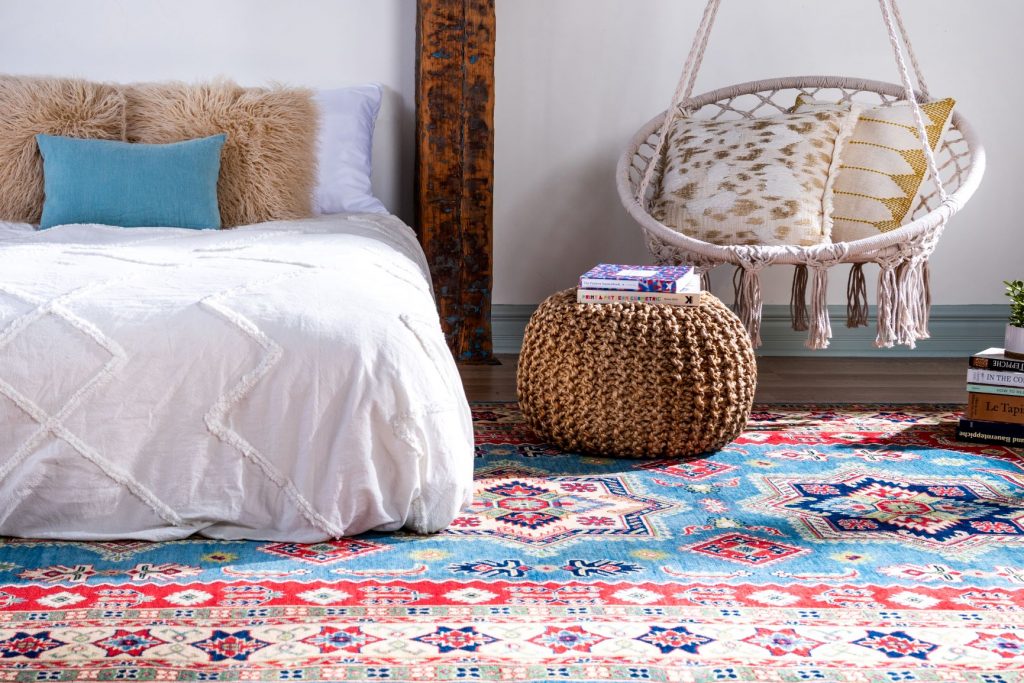If you’ve looked around the Rugs.com shop and blog, you already know how much we love hand-knotted rugs.
Known for their durability, quality materials, and unmatched beauty, hand-knotted rugs are as diverse as the people who make them all over the world. Whether it’s an Oriental rug made in Turkey, Pakistan, or Morocco or a genuine Persian rug made in Iran, every hand-knotted rug is a one-of-a-kind work of art that deserves a place of honor in your home.
Styles of Oriental Hand-Knotted Rugs
So what is an Oriental Rug? “Oriental rug” is an umbrella term that covers a huge variety of handmade rugs from across the Middle East, Central Asia, and North Africa. This technically includes Persian rugs as well. In practice, however, people talking about Oriental rugs typically are referring to handmade rugs from outside of Iran.
One quick note—it’s a common misconception that Persian rugs exclusively use Persian knots, or that Persian knots are only found in Persian rugs. Actually, both Turkish and Persian knots are used throughout the rug-making world. Read our full guide on the types of rug knots for more details.
There are almost endless styles of Oriental rugs on the market, but for the purpose of this article, we’ll focus on some of the best known.
Kazak
While originally from the south Caucuses in the region now known as Armenia, Kazak-style hand-knotted rugs are now made all over the world including in Turkey and Pakistan.
Modern weavers of Kazak rugs go to great lengths to preserve the traditions that these rugs came from. Kazak rugs are distinguished by their use of Turkish knots, natural dyes, hand-spun wool, and the stonewashing process they go through. The result is a strong, short-pile rug with a beautiful antique finish.
Kazak rugs typically have geometric designs in deep indigo blues, creamy ivories, and rusty reds. Though the colors and techniques used are quite different from those found in native North American rugs and blankets, the designs in Kazak rugs are still popular with people looking to bring a southwestern to their homes.
Bukhara
Originating in the Bukhara region of Uzbekistan, Bukhara-style rugs are made across the rug-weaving world today. They are most easily recognized by their distinctive patterns and thick, lush wool pile made with Persian knots.
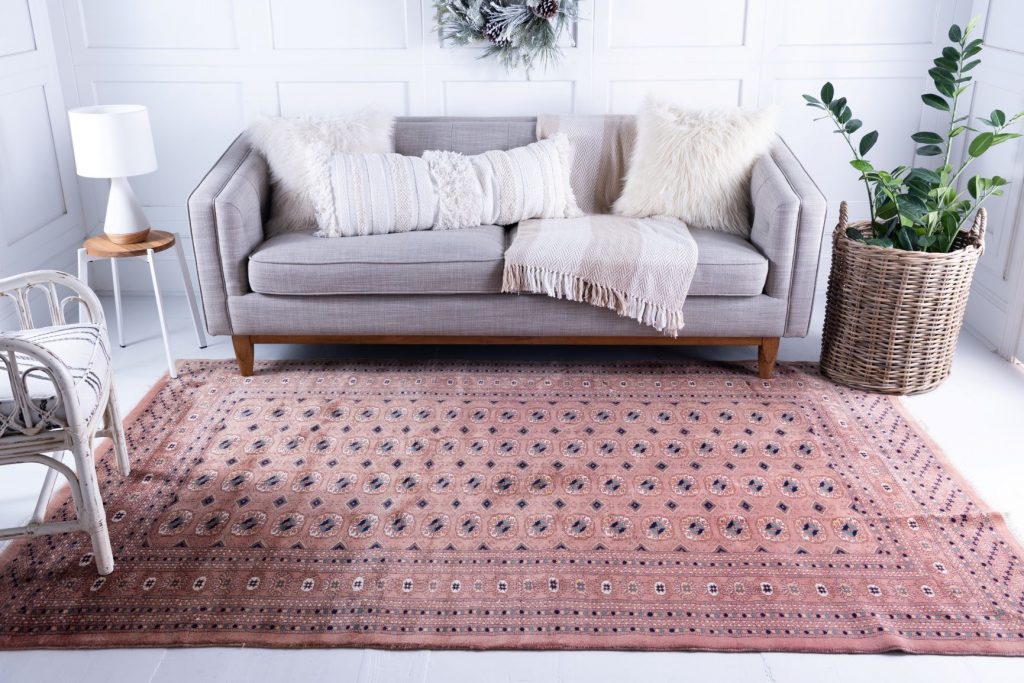
The traditional Bukhara rug design is rows of stylized octagonal flowers called “guls” surrounded by a wide border of geometric patterns. While the colors used can vary widely from rug to rug, each individual rug uses a relatively limited palette. The classic colors for Bukhara rugs are deep, rich reds, but they can be found in ivories, blues, and greens as well.
Kilim
Unlike the other rugs introduced in this article, Kilims are flatweave rugs. This means the designs are made with colored weft yarns woven into the warp of the rug rather than by knotting in pile yarns. This results in a rug that is flat, pileless, extremely durable, and often fully reversible.
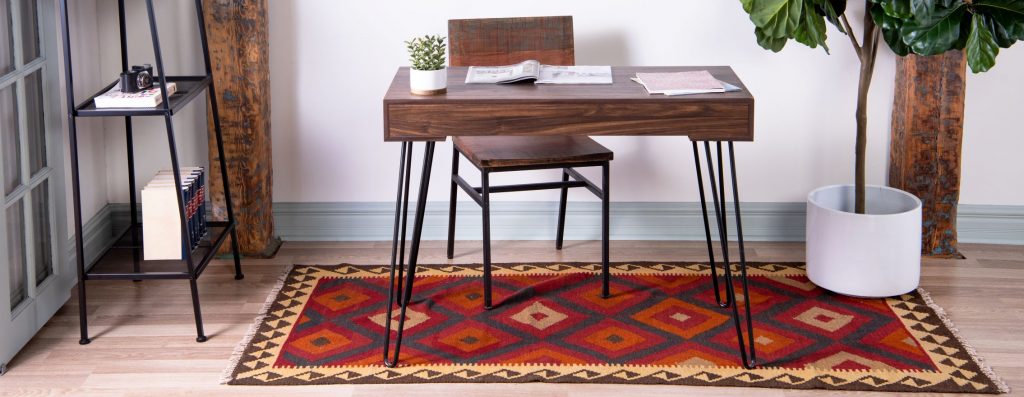
One of the biggest advantages of Kilims is the price. Because their construction technique is relatively simple, Kilims can be made very quickly and cheaply when compared to other styles of Oriental rug. That makes Kilims a great choice for almost any budget.
Styles of Moroccan Hand-Knotted Rugs
Moroccan rugs are often lumped in with Oriental rugs but could almost be considered a category all their own. The techniques used to make Moroccan rugs are similar to those found in other Oriental rugs but were developed separately by the local Berber tribes. There are several notable types of Moroccan rug.
Beni-Ourain
The “classic” and most recognizable style of Moroccan rug is the Beni-Ourain.
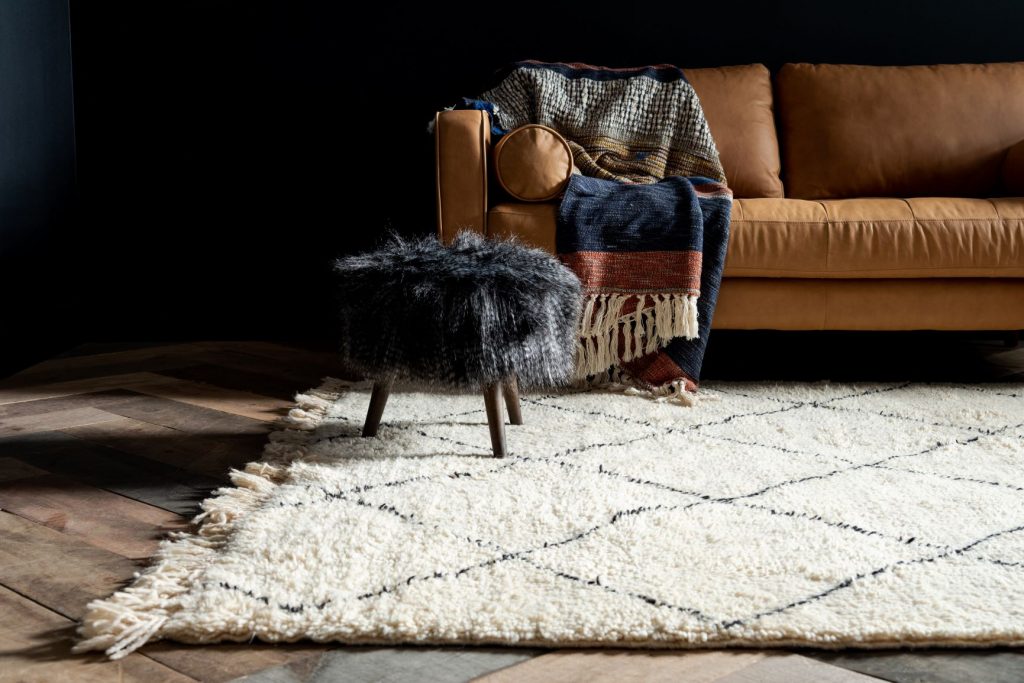
Beni-ourain rugs are characterized by their ivory hues—a result of using undyed wool—simple, often asymmetric lattice patterns, and shaggy pile meant to ward off the cold of the High Atlas Mountains where they are made.
Azilal
Further down in the Middle Atlas Mountains, you’ll find Azilal rugs being made.
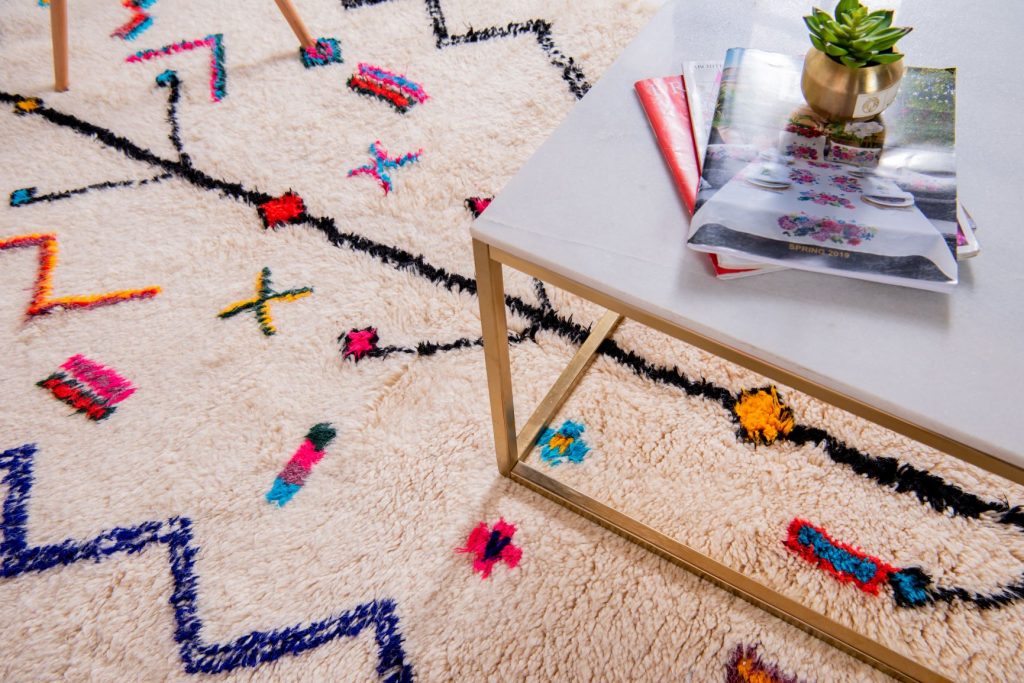
These rugs are usually slightly thinner than their Beni-Ourain cousins and much more densely decorated. Azilal rugs will often have complicated asymmetric designs that reflect the life of the weaver rendered in brightly dyed colors against an ivory background.
Boucherouite
Boucherouite rugs are a newer phenomenon that have quickly gained popularity around the world.
These “rag rugs” are made from recycled fabrics from a variety of sources and materials, including clothing, other rugs, and shipping bags. Their free-form designs are incredibly colorful and visually interesting thanks to the varied materials used in their construction.
Styles of Persian Hand-Knotted Rugs
Persian rugs are hand-knotted rugs from Iran. Persian rugs have long been prized for their beautiful patterns and unmatched quality, but today, they carry even more prestige due to their relative scarcity in the West. Because of various embargoes over the years, the supply of Persian rugs is limited, encouraging many collectors to keep them as investment pieces.
Persian rug styles are usually named for the city, region, or ethnic group that makes them. There are dozens of variations, but we’ll focus on some of the most popular and well known.
Tabriz
In the far northwest corner of Iran is the ancient city of Tabriz. As one of the historical capitals of Iran, and thanks to its proximity to Turkey and Azerbaijan, Tabriz has long been a center of trade and rug manufacturing in the region.
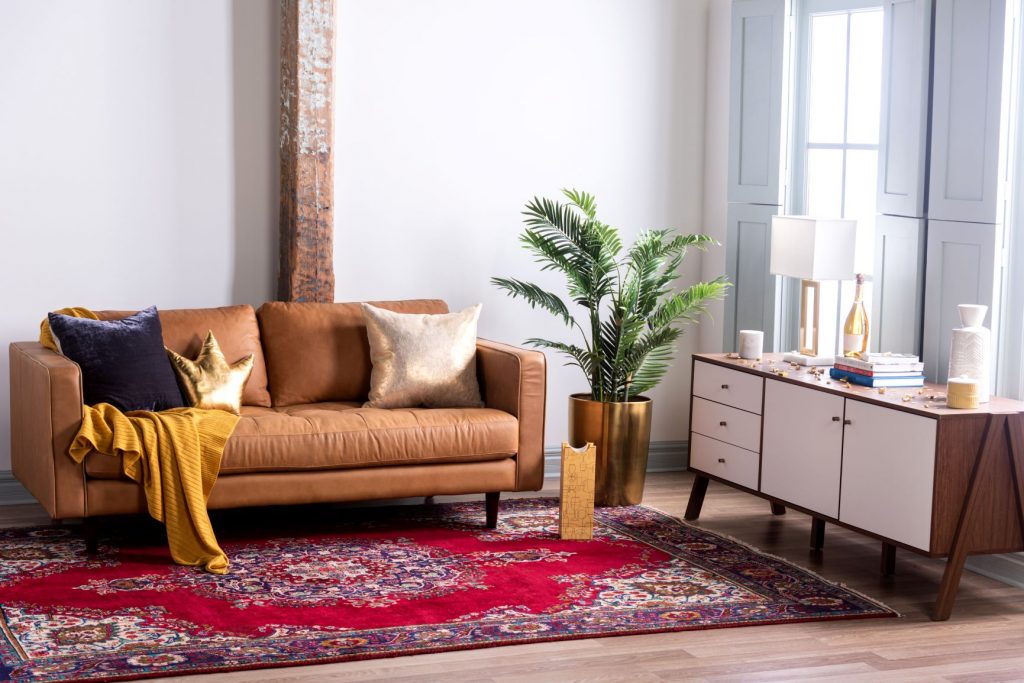
There are no defining patterns for Tabriz rugs, with medallions and all-over designs being just as common. Their most distinguishing feature is a dense construction and fine quality, with many rugs having a density of well over 100 knots per square inch. Tabriz rugs typically use Turkish knots but will occasionally use Persian knots or even a combination of the two for more intricate patterns.
Heriz
Only 50 miles east of Tabriz is the village of Heriz, home to some of the most popular village and tribal rugs made in Iran.
It’s sometimes speculated that Heriz rugs as they currently are were the result of enterprising merchants from Tabriz seeking a way to produce affordable room-sized Persian rugs for export. Weavers from the Heriz region then adapted the ornate patterns of Tabriz rugs to the more geometric designs they were familiar with.

Today, Heriz rugs are easy to spot by their large, diamond-shaped medallions, oversized corner ornamentation, and occasional Tree of Life motifs. Heriz designs have a lot in common with Kazak rugs, which shouldn’t be surprising given the proximity of Heriz to the Caucus mountains where Kazak rugs are made.
Like other rugs made in the western parts of Iran, they are typically made with Turkish knots, but are typically have a lower knot density (less than 100 knots per square inch) that lends to their rustic charm.
Kerman
Located in east-central Iran, the city of Kerman and its nearby villages has long been an important center of both rug trading and weaving.
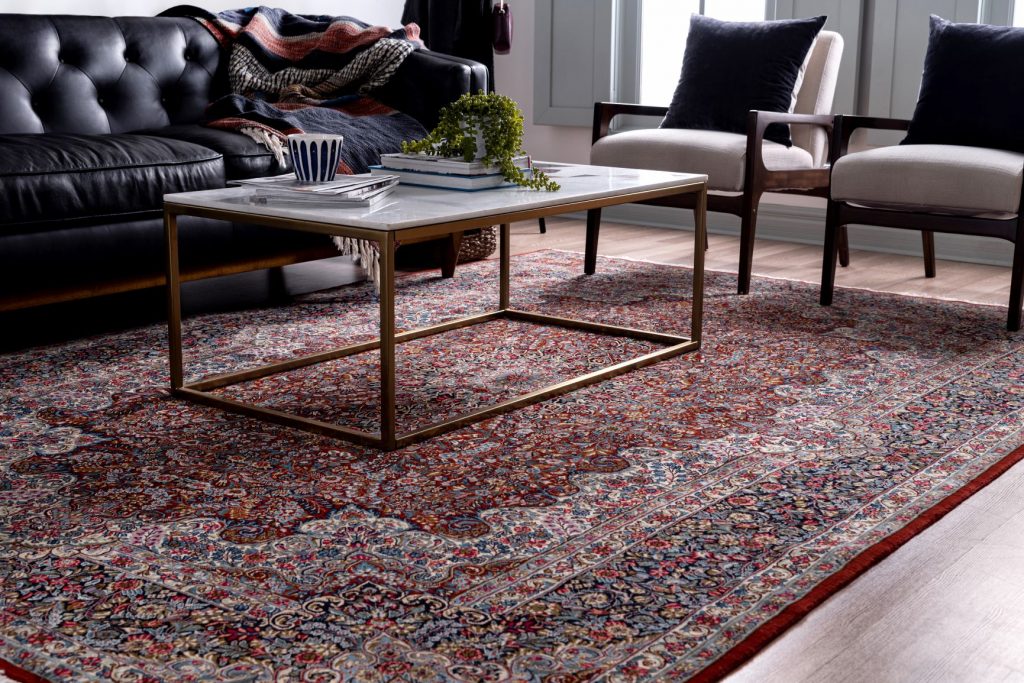
Kerman rugs are especially notable for their colors. In Kerman, wool is dyed before it is spun, allowing for a more consistent color throughout. Also unlike other styles of Persian rug, a single Kerman rug can use a huge variety of colors, with many having 15-30 different hues. The dazzling colors and curvilinear designs made possible by using Persian knots makes Kerman rugs highly prized around the world.
Nain
Even if it wasn’t a historic center for rug weaving, today the city of Nain in central Iran is known around the world for crafting some of the finest rugs available.
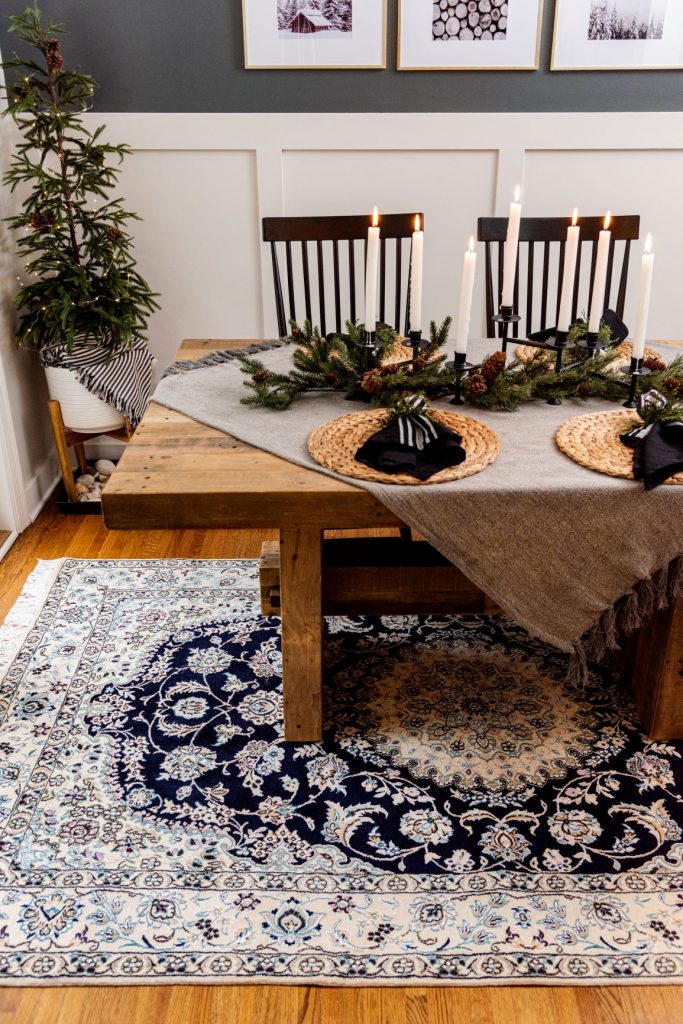
Nain rugs are especially notable for the high percentage of silk they use, giving the rugs a characteristic shimmer. Patterns and designs are heavily influenced by rugs made in nearby Isfahan, with beautiful and elaborate floral patterns made possible by using Persian knots.
Gabbeh
Among the most popular and revered tribal Persian rugs are Gabbehs. The simple designs and thick, plush texture has earned Gabbeh rugs die-hard fans around the world.
The word “gabbeh” comes from Farsi and means “uncut,” “natural,” or “raw.” Despite the connotations of those words, Gabbeh rugs are anything but rough.
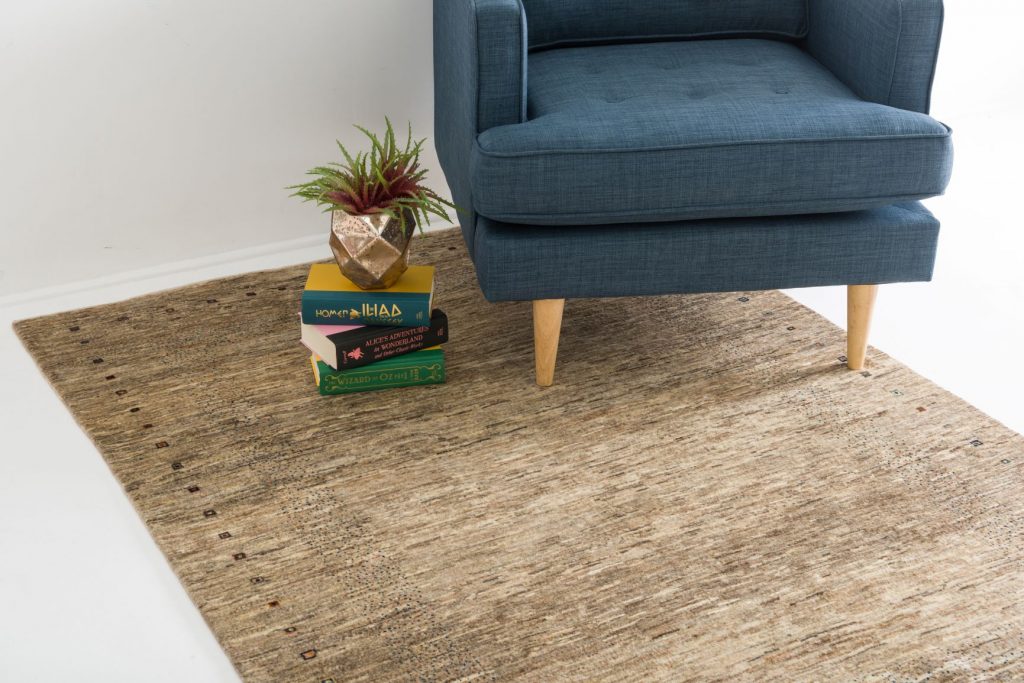
The first Gabbeh rugs were made in similar conditions to Moroccan Beni-Ourain rugs, to ward against the cold in the Zagros mountains of Iran. Made with hand-spun wool and natural dyes, these rugs are far thicker than most other Persian rugs, with some even being close to having a shag pile. Their designs are typically very simple, relying on large fields of solid colors and occasional agricultural symbols. This simplicity lends to their rustic charm and makes them very popular in modern homes.
Finding the Right Style of Hand-Knotted Rug for You
Once you start looking, you’ll likely be surprised by the depth you find in the world of hand-knotted rugs. Rest easy—you can’t really make a bad choice. Hand-knotted rugs, especially Persian rugs, maintain their value well with many even increasing in value over time. As an investment, a hand-knotted rug will always be worth what you put into it.
When buying your first Persian or Oriental rug, start with what you’ve learned here. Decide if you prefer traditional, floral, and rounded designs or geometric tribal patterns. Then, find one of the styles listed here in the collection on Rugs.com. Every hand-knotted rug is one-of-a-kind, so don’t be afraid to compare different rugs or reach out to our 24/7 support line if you have any questions.

